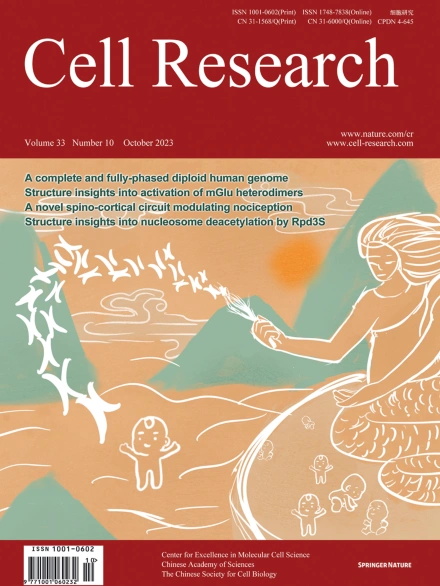
Advanced Search
Submit Manuscript
Advanced Search
Submit Manuscript
Volume 33, No 10, Oct 2023
ISSN: 1001-0602
EISSN: 1748-7838 2018
impact factor 17.848*
(Clarivate Analytics, 2019)
Volume 33 Issue 10, October 2023: 775-789 |
A direct spino-cortical circuit bypassing the thalamus modulates nociception
Bing Cai1,2,3,† , Dan Wu4,† , Hong Xie2,10,† , Yan Chen1,2,3 , Huadong Wang5 , Sen Jin5 , Yuran Song1,2,3 , Anan Li6 , Shiqi Huang2,7 , Sashuang Wang8 , Yingjin Lu1 , Lan Bao1,7,9 , Fuqiang Xu5 , Hui Gong6 , Changlin Li1,8,* , Xu Zhang1,2,3,7,*
1Guangdong Institute of Intelligence Science and Technology, Hengqin, Zhuhai, Guangdong, ChinaNociceptive signals are usually transmitted to layer 4 neurons in somatosensory cortex via the spinothalamic-thalamocortical pathway. The layer 5 corticospinal neurons in sensorimotor cortex are reported to receive the output of neurons in superficial layers; and their descending axons innervate the spinal cord to regulate basic sensorimotor functions. Here, we show that a subset of layer 5 neurons receives spinal inputs through a direct spino-cortical circuit bypassing the thalamus, and thus define these neurons as spino-cortical recipient neurons (SCRNs). Morphological studies revealed that the branches from spinal ascending axons formed a kind of disciform structure with the descending axons from SCRNs in the basilar pontine nucleus (BPN). Electron microscopy and calcium imaging further confirmed that the axon terminals from spinal ascending neurons and SCRNs made functional synaptic contacts in the BPN, linking the ascending sensory pathway to the descending motor control pathway. Furthermore, behavioral tests indicated that the spino-cortical connection in the BPN was involved in nociceptive responses. In vivo calcium imaging showed that SCRNs responded to peripheral noxious stimuli faster than neighboring layer 4 cortical neurons in awake mice. Manipulating activities of SCRNs could modulate nociceptive behaviors. Therefore, this direct spino-cortical circuit represents a noncanonical pathway, allowing a fast sensory-motor transition of the brain in response to noxious stimuli.
https://doi.org/10.1038/s41422-023-00832-0